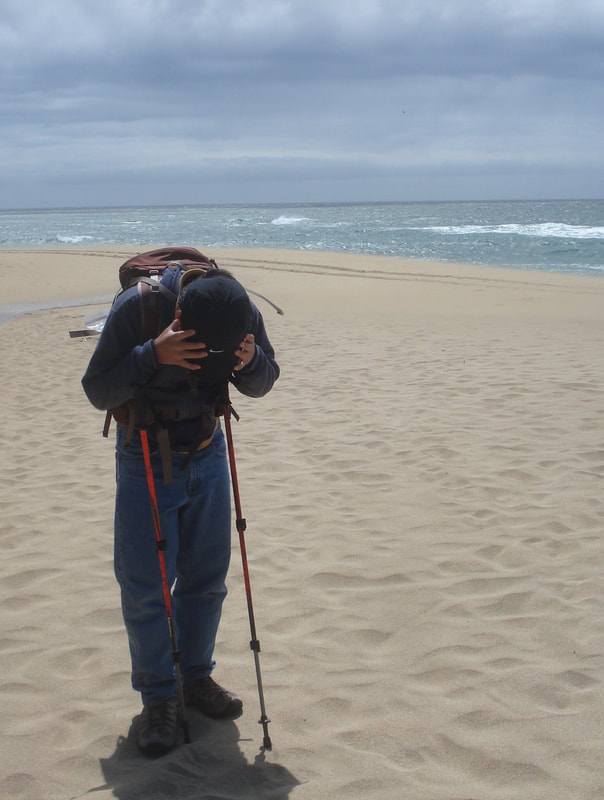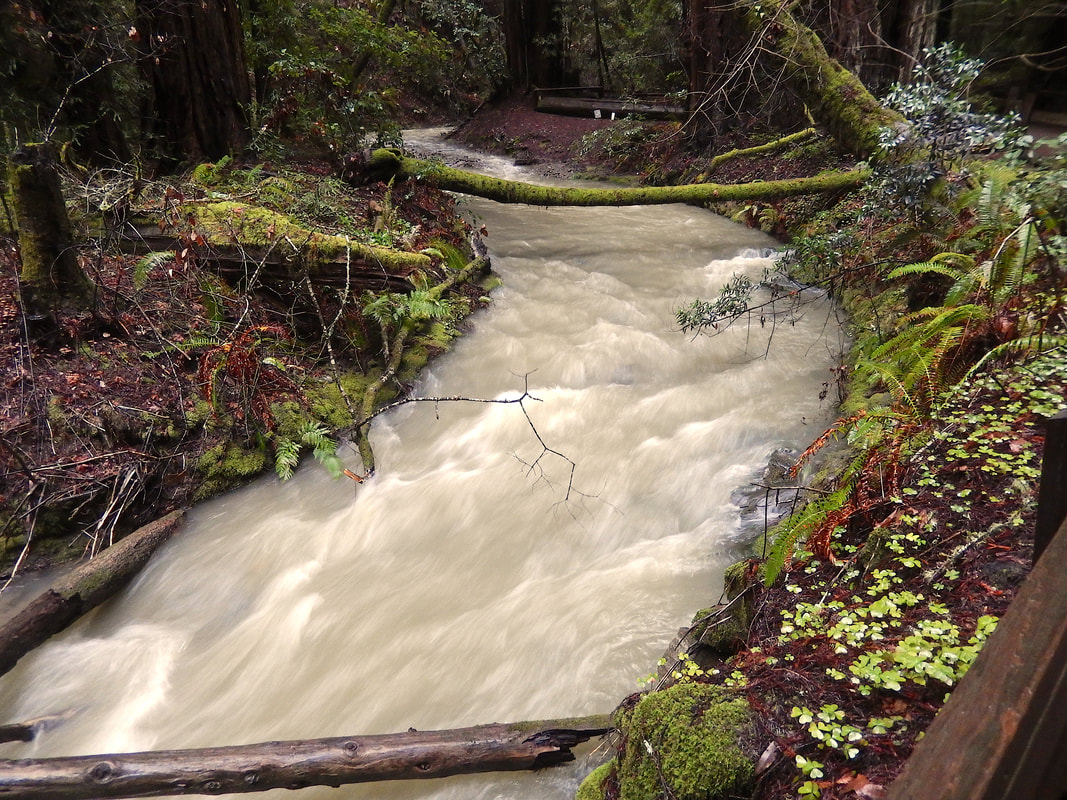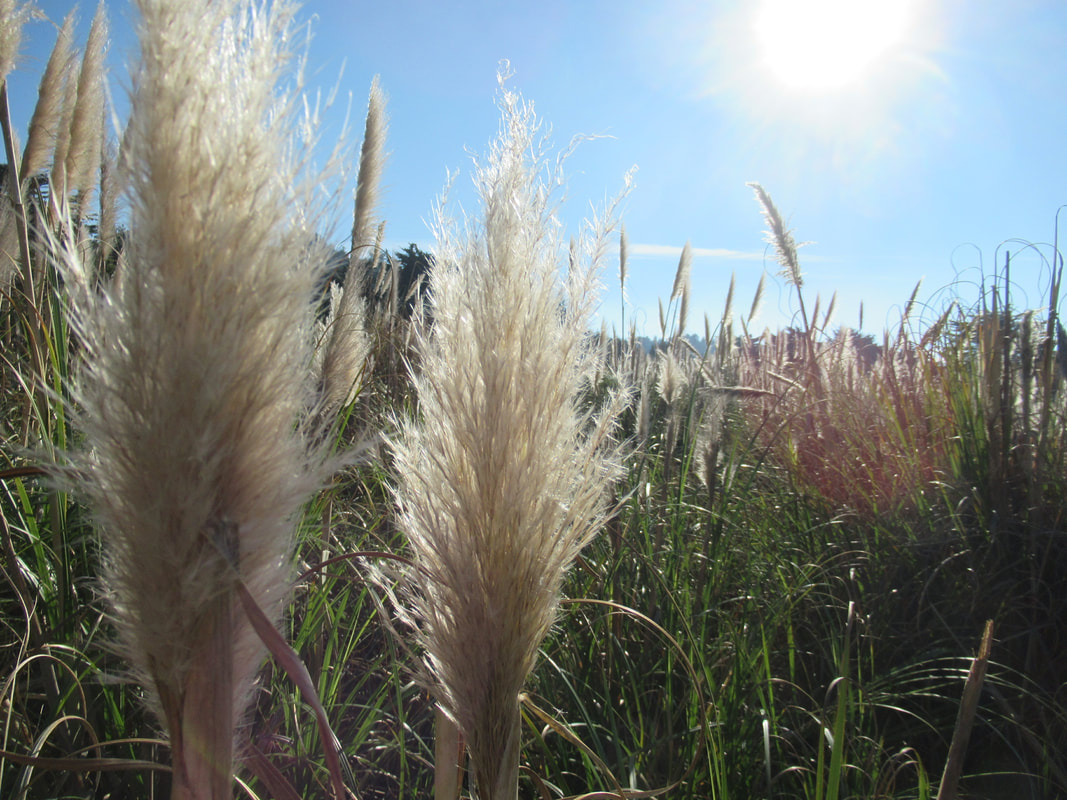|
Sensory Overload
Though especially prevalent in those on the autism spectrum, sensory processing issues are a challenge for a wide range of people. Why do sensory challenges occur? How do we help a person navigate life with sensory processing difficulties? These are infinitely complex questions having answers as nuanced as the individuals struggling to cope. The experts I respect most are those who say, “We don’t have a clear answer, but let’s do our best with what we know at this time.” Example: Our son standing frozen on the beach, head and shoulders bent forward, thumbs pressing his ears and hands shielding his eyes. Too loud? Too bright? Wind too strong? Probably all those and more, but our son has difficulty with language and can’t tell us. Even verbally articulate people may not be able to pinpoint the exact element that is bothering them. Years of peeling away onion layers of cause-and-effect helped us understand our son’s sudden halt-and-freeze episodes better. Waves of emotion, triggered by memories associated with a place or type of scenery, can stop our son in his tracks. Dynamics beyond the standard five senses can trigger reactions in any of us. Some individuals may react with a loud meltdown or aggression. Something invisible to most of us, like the flickering of fluorescent lights, can trigger a major episode. When we see a child in public “behaving badly,” we might stop to consider the possibility that the child and family are dealing with extraordinary sensory processing challenges. Receiving a little space and understanding can make all the difference in regulating systems back to functional mode. Our son’s visit to the beach in this photo was actually happy. He needed to stop and regroup several times: for a hug, for a wind break behind some rocks, for a snack. But overall, being out in the world pelted by sensory input is much better than hiding from the world under a literal and figurative blanket. Exploring the outdoor world is a hard-earned opportunity for those with sensory challenges. The patience, love and support it takes to get our son and others in similar straits out in the world is something we are eternally grateful for. This week’s Hike Notes are about Montara Beach, a gem of a beach between Pacifica and Half Moon Bay, with water that glimmers in a unique blend of deep blues and aquamarine greens. Please feel free to share. If you’re not able to take one of these Northern California hikes, hopefully you can enjoy the photos! The list of hikes is getting long! Please check the Quick View Hike List or scroll down the main Hikes page to see the current list of hike notes. New this week: Hike Notes 47: Montara Beach
1 Comment
Repeat Performance
Though it doesn’t always feel that way, there are some things in life we can count on. The sun will rise and set. A full moon will come around every month. Flowers will bloom and fade. Nature’s consistency is countered by uniqueness. A bright, blazing moonrise is contrasted by a hazy moon glowing eerily in a misty sky. A sunset burning in bright reds and oranges shares equal footing with a sun dissipating in pastel lavenders and pinks. Flowers bloom differently depending on that year’s rainfall, sun exposure, air quality, temperatures, and perhaps the tender loving care of a gardener. Even the smallest, least showy petals lift our hearts. Sometimes the quiet, struggling blossom is more inspiring to watch, straining to make its way into the world. Like people, sometimes a flower has to work hard to make an appearance. One treat we look forward to is the glorious annual display of magnolia blossoms around San Francisco. These repeat performers put on a different show every year. This week’s Hike Notes introduce a Magnolia Stroll – San Francisco Botanical Garden. The amazing variety of magnolia trees at San Francisco’s Botanical Garden at Strybing Arboretum offer show-stopping colors and blooms. If one of their 54 species of magnolia isn’t having a stellar year, another will be. Please feel free to share. If you’re not able to take one of these Northern California hikes, hopefully you can enjoy the photos! The list of hikes is getting long! Please check the Quick View Hike List or scroll down the main Hikes page to see the current list of hike notes. New this week: Hike Notes 46: Magnolia Stroll – San Francisco Botanical Garden Swimming Upstream
What is life without a challenge? Having to fight our way through difficulties, big and small, keeps us forging ahead. Having said that, hearing phrases like, “What doesn’t kill you only makes you stronger,” or, “God only gives you what you can handle,” can feel like a slap in the face when we’re crushed under an especially heavy load of life turmoil. We bow in deference to those bearing heavier burdens, but no matter how much “easier” our life may seem, we all go through tough times. Most of us manage to survive the worst waves pummeling down on us, coming up to breathe on the other side by sheer determination, good fortune, or a combination of both. Sometimes it helps to just stop and say, “Damn, this is hard.” Take a deep breath and figure out your next steps. Be kind to yourself. Stand up and move forward again. This is the time of year that salmon, iconic upstream swimmers of lore, are muscling their way upstream to spawn. Lagunitas Creek in the Marin Watershed is a popular area to observe salmon from late fall to early spring. Salmon or no salmon, the shady trails along Lagunitas Creek near Samuel P. Taylor State Park make for a mystical, woodsy walk. The photo for this “Swimming Upstream” Insights post was taken after heavy rains at Redwood Creek in Muir Woods, another famous salmon habitat in Marin County. Please feel free to share. If you’re not able to take one of these Northern California hikes, hopefully you can enjoy the photos! The list of hikes is getting long! Please check the Quick View Hike List or scroll down the main Hikes page to see the current list of hike notes. New this week: Hike Notes 45: Lagunitas Creek Walk Close Comfort
Tired, stressed, coming down with a cold. Or maybe we’re in low energy mode for no definable reason. Yet we know that getting up, getting out, and moving around in fresh air would do us a world of good. On a really tough day, staying home might be the right choice. If we’re at sluggish-but-mobile level, our family takes an easy walk at our neighborhood beach or park. Then there are days when we aren’t up for a long drive or hike, but we want to stretch our legs and enjoy pretty scenery. We’ve cultivated a handful of short-drive, easy-walk outings for those times. Short drive. Easy parking. No steep hills. A dash of ocean, forest or mountain views. Being a special needs caregiving household, the scale can tip toward “we’re tired” pretty often. But we still get up. We still take that short drive. And we walk, if only for a short distance, and soak up that healing clean air and scenery. One of our favorite low-key destinations is our quirky little loop from the not-well known Calera Creek garden path in Pacifica to Rockaway Beach and back. If you’re around Pacifica, and need an easy but uplifting outing, give this one a try. Please feel free to share. If you’re not able to take one of these Northern California hikes, hopefully you can enjoy the photos! The list of hikes is getting long! Please check the Quick View Hike List or scroll down the main Hikes page to see the current list of hike notes. New this week: Hike Notes 44: Rockaway Beach via Calera Creek Path |
Lisa LouisSharing insights and hiking highlights (Hikes, Hike Search by Area) from the special needs caregiver front in San Francisco. Archives
July 2024
Categories |





 RSS Feed
RSS Feed